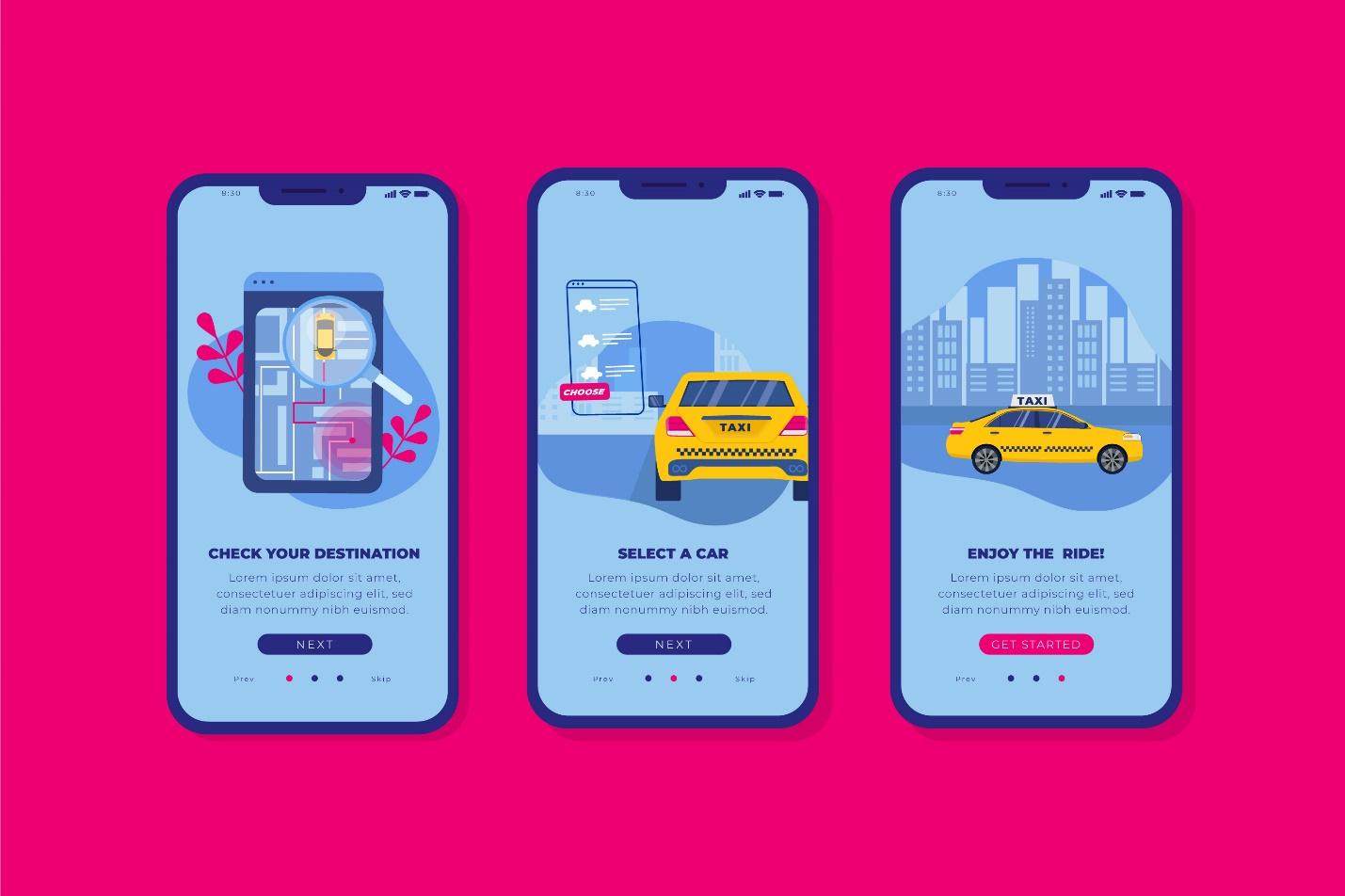In today’s fast-paced world, rideshare apps have revolutionized how people commute. With the increasing demand for convenient and affordable transportation solutions, creating a competitive rideshare app presents a remarkable opportunity. This blog will provide a detailed roadmap for developing your rideshare app and building a successful ride-sharing platform in 2023. Let’s delve into each step and explore the intricacies of creating a remarkable rideshare app.
Conduct Extensive Market Research and Analysis
Before diving into app development, it is crucial to conduct thorough market research. Identify your target audience, study existing rideshare apps, and analyze the market trends. By understanding the competitive landscape, you can differentiate your app and identify the unique needs of your potential users. Consider demographics, user preferences, pricing models, and geographic scope to tailor your rideshare app accordingly.
In addition to market research, perform a comprehensive competitor analysis. Study the strengths and weaknesses of existing rideshare apps and identify areas where you can offer a superior experience. Analyze their pricing models, user acquisition strategies, driver recruitment methods, and customer support systems to gain insights and identify opportunities for differentiation.
Suggested Read: How to Create a Location Based App
Define Key Features and Functionality
Providing a seamless and user-friendly experience is important to create a competitive rideshare app. Consider incorporating the following key features:
a. User Registration and Authentication
Enable users to securely create profiles, login, and manage their personal information. Implement a robust authentication system to safeguard user accounts. Consider offering social media login options for added convenience.
b. Ride Booking and Management
Develop an intuitive interface that allows users to request rides and specify their pick-up and drop-off locations. Provide options for scheduling rides in advance, selecting vehicle types (e.g., sedan, SUV, luxury), and specifying additional preferences such as child seats or wheelchair accessibility.
c. Real-Time Tracking and Navigation
Implement GPS technology to enable users and drivers to track each other’s location in real time. Integrate mapping and navigation services (e.g., Google Maps, Mapbox) to optimize routes and provide accurate estimated arrival times. Add live traffic updates and alternative route suggestions to improve the user experience.
d. Payment Integration
To facilitate seamless transactions, offer multiple payment options, including credit/debit cards, digital wallets (e.g., Apple Pay, Google Pay), or in-app payment systems. Ensure that the payment process is secure and user-friendly. Consider integrating with popular payment gateways like Stripe or Braintree to simplify the payment flow.
e. Rating and Review System
Allow users to rate and provide feedback on drivers, ensuring accountability and maintaining service quality. Incorporate a two-way rating system to gather feedback from both drivers and passengers. Display driver ratings and reviews to help users make informed decisions when selecting a driver.
f. Push Notifications and Alerts
Through timely notifications, keep users informed about ride confirmations, driver arrivals, and important updates. Implement alerts for surge pricing, driver ratings, and promotional offers to enhance user engagement. Personalize notifications based on user preferences and location to provide relevant and timely information.
g. Driver Management
Develop a robust system to manage driver registrations, background checks, and availability status. Implement features for driver earnings, ratings, and performance tracking. Consider integrating automatic driver allocation algorithms to optimize efficiency and minimize user waiting times.
h. Surge Pricing and Fare Calculation
Implement dynamic pricing algorithms to optimize fares during peak hours or high-demand periods. Ensure transparency by providing fare estimates upfront and explaining the pricing logic. Display surge pricing information to users before they confirm their ride bookings.
Choose the Right Technology Stack
Selecting the appropriate technology stack is crucial for successfully developing your rideshare app. Consider scalability, performance, development cost, and developer expertise. Common technologies include:
a. Front-end Development
Use programming languages like React Native or Flutter for cross-platform development, ensuring a consistent user experience across devices. Leverage responsive design principles to cater to various screen sizes. Consider using frameworks like Redux for state management and UI libraries like Material-UI or Ant Design for pre-built UI components.
b. Back-end Development
Consider using frameworks like Node.js or Ruby on Rails for efficient server-side development, data management, and API integration. Choose a scalable infrastructure to handle increasing user demand and ensure smooth operations. Use RESTful APIs for communication between the client-side and server-side components.
c. Database Management
Select a reliable and scalable database system, such as MySQL or MongoDB, to securely handle user and trip data. Implement caching mechanisms for improved performance and efficient data retrieval. For flexibility and scalability, consider using cloud-based database solutions like Amazon RDS or Firebase Firestore.
Designing the User Interface (UI) and User Experience (UX)
Create an intuitive and visually appealing UI/UX design that is easy to navigate. Use wireframing tools like Sketch or Adobe XD to visualize app screens, flows, and interactions. Pay attention to color schemes, typography, iconography, and layout to enhance the user experience.
Conduct user testing and gather feedback during the design phase to ensure the app is intuitive and meets user expectations. Iterate on the design based on user feedback to improve usability and enhance user satisfaction.
App Development and Testing
Once you have finalized the design and technology stack, it’s time to start developing your rideshare app. Divide the development process into sprints and ensure regular testing to identify and fix any bugs or performance issues. Collaborate with skilled developers or consider outsourcing development to ensure a high quality and efficient app.
Follow an agile development approach, breaking the development tasks into smaller milestones. Use project management tools like Jira or Asana to track progress, manage tasks, and collaborate with the development team. Conduct thorough testing, including unit testing, integration testing, and user acceptance testing, to ensure the app’s stability and functionality.
Implement Robust Security Measures
User safety is paramount in rideshare apps. To build user trust, implement stringent security measures, including driver background checks, encrypted transactions, two-factor authentication, and secure data storage. Comply with privacy regulations and ensure data protection throughout the app.
Consider implementing ride-sharing insurance, SOS buttons, or panic alerts to enhance user safety and provide peace of mind. Partner with reliable third-party services or develop in-house security protocols to ensure the highest level of protection.
Launch and Promotion
Prepare for an impactful launch by optimizing your app for app stores like Apple App Store and Google Play Store. Follow their submission guidelines, create compelling app descriptions, and use eye-catching visuals to attract potential users. Leverage digital marketing strategies to create awareness and attract users.
Collaborate with influencers, run social media campaigns, and consider offering attractive referral programs to incentivize new users. Develop a comprehensive marketing plan that includes online and offline channels to maximize your app’s visibility. Measure the effectiveness of your marketing efforts and adapt your strategies based on user acquisition data and feedback.
Continuous Improvement and Innovation
To stay competitive in the rideshare market, continuously gather user feedback and implement regular updates and improvements. Analyze user data, monitor app performance, and track key performance indicators (KPIs) to identify areas for enhancement. Incorporate innovative features like carpooling options, eco-friendly initiatives, or integration with emerging technologies like AI or IoT to cater to evolving customer needs and differentiate your app.
Regularly analyze user feedback, conduct usability tests, and leverage analytics tools to gain insights into user behavior and preferences. Actively engage with your user community through social media platforms or in-app feedback mechanisms to foster a sense of trust and loyalty.
Monitor your app’s performance, including response times, loading speeds, and server uptime, to ensure a smooth and reliable user experience. Optimize your app’s performance by implementing caching mechanisms, load-balancing techniques, and code optimizations.
Stay current with industry trends, regulatory changes, and technological advancements. Embrace innovation and consider integrating emerging technologies like machine learning, augmented reality, or voice assistants to enhance user engagement and offer personalized experiences.
Why Do You Need Experts’ Help to Develop a Rideshare App?
Creating a rideshare app from scratch involves many complex tasks requiring specialized knowledge and expertise. While you may have a clear vision for your app, seeking the help of experts can significantly enhance the development process and ensure the success of your venture. Here are some compelling reasons why you need experts’ help to develop a rideshare app:
Technical Proficiency
Building a rideshare app involves various technical aspects, including front-end and back-end development, database management, API integrations, and security implementation. Experts have the necessary technical skills and experience to navigate these complexities efficiently. They understand the best practices, coding standards, and industry trends, allowing them to create a robust and scalable app that meets the highest quality standards.
User-Centric Design
User experience (UX) and user interface (UI) design play a critical role in the success of a rideshare app. Experts in app development possess the knowledge and expertise to design intuitive interfaces that prioritize ease of use, seamless navigation, and visually appealing aesthetics. They conduct extensive user research, develop wireframes, and create prototypes to ensure the app meets user expectations and preferences.
Efficient Development Process
Developing a rideshare app involves multiple stages, including planning, design, development, testing, and deployment. Experts follow established project management methodologies and development frameworks, ensuring an efficient and streamlined process. Their experience allows them to identify potential roadblocks early on, mitigate risks, and adhere to project timelines. With experts’ guidance, you can achieve faster development cycles, reducing time to market and maximizing your chances of success.
Integration of Essential Features
Rideshare apps require comprehensive features to deliver a seamless user experience. These features include user registration, ride booking and management, real-time tracking, payment integration, rating and review systems, and driver management. Experts understand these functionalities and can guide you in selecting and implementing the right features for your app. Their expertise ensures that your app provides the necessary tools for users and drivers to engage effectively.
Security and Data Privacy
Ensuring the security of user data and transactions is crucial for the success and reputation of a rideshare app. Experts are well-versed in implementing robust security measures, such as driver background checks, encrypted communications, secure payment gateways, and compliance with data protection regulations. They stay updated with the latest security threats and best practices, safeguarding your app and protecting user information from potential vulnerabilities.
Scalability and Performance Optimization
As your rideshare app gains popularity and attracts a growing user base, scalability, and performance become critical factors. Experts design and develop your app with scalability in mind, ensuring it can handle increased user demand without compromising performance. They leverage technologies like cloud computing and caching mechanisms to optimize app performance and deliver a seamless experience even during peak usage.
Ongoing Support and Maintenance
App development is an ongoing process that requires continuous updates, bug fixes, and feature enhancements. Experts provide post-development support and maintenance services, ensuring your rideshare app remains up-to-date, bug-free, and fully functional. Their expertise in monitoring app performance, analyzing user feedback, and implementing updates helps you stay ahead of the competition and address evolving user needs.
Frequently Asked Questions (FAQs)
A rideshare app is a mobile application that connects passengers seeking transportation with drivers who provide the service. It allows users to conveniently book, track, and pay for rides using their smartphones.
The demand for rideshare services continues to grow, presenting a lucrative opportunity for entrepreneurs. Creating a rideshare app in 2023 allows you to tap into this market and offer innovative features, personalized experiences, and competitive services to meet the evolving needs of users.
Key features for a rideshare app include user registration, ride booking, and management, real-time tracking and navigation, payment integration, a rating and review system, push notifications and alerts, driver management, and surge pricing and fare calculation.
To differentiate your rideshare app, conduct thorough market research to understand user preferences and identify existing app gaps. Consider offering unique features like carpooling options, personalized experiences, eco-friendly initiatives, or integration with emerging technologies. Focus on providing excellent customer service and ensuring user safety.
The choice of technology stack depends on factors like scalability, performance, development cost, and developer expertise. Common options include React Native or Flutter for cross-platform development, Node.js or Ruby on Rails for back-end development, and databases like MySQL or MongoDB for data management.
Implement robust security measures such as driver background checks, encrypted transactions, two-factor authentication, and secure data storage. Comply with privacy regulations and integrate safety features like ride-sharing insurance, SOS buttons, or panic alerts. Regularly update your app with security patches and stay informed about potential security threats.
Optimize your app for app stores, and leverage digital marketing strategies like social media campaigns, influencer partnerships, and referral programs. Create compelling app descriptions, use eye-catching visuals, and monitor the effectiveness of your marketing efforts. Engage with your user community and gather feedback to foster trust and loyalty.
Continuously gather user feedback and implement regular updates and improvements based on user preferences. Stay current with industry trends, regulatory changes, and technological advancements. Analyze user data, monitor app performance, and embrace innovation to offer personalized experiences and differentiate your app from competitors.
Final Thoughts
Creating a competitive rideshare app in 2023 requires meticulous planning, a customer-centric approach, and technical expertise. You can develop an app that stands out in the market by conducting extensive market research, defining key features, choosing the right technology stack, ensuring a seamless user experience, and implementing robust security measures. With proper execution, ongoing improvements, and effective marketing, your rideshare app can drive you toward success in the ever-growing ride-sharing industry. Start your journey today and transform the way people commute!
Remember, the rideshare market is dynamic, so stay updated with the latest trends, regulations, and customer preferences to remain competitive in this evolving landscape. Embrace innovation, prioritize user satisfaction, and continuously enhance your app to create a compelling and thriving rideshare platform. Best of luck on your rideshare app development journey in 2023!




